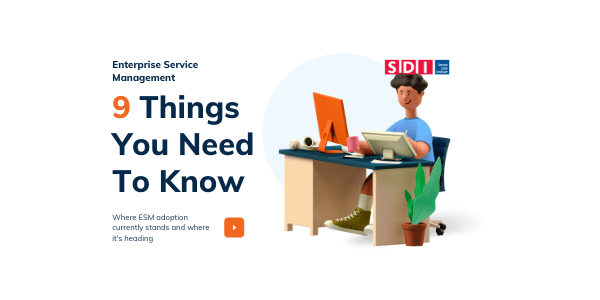
Enterprise service management has been a key ITSM trend for the last half-decade – the use of IT service management (ITSM) principles and capabilities by other business functions/teams to improve their operations, services, experiences, and outcomes – with its tool-based use-case origins going back even further.
Where ESM adoption currently stands and where it’s heading
If you want to know more about what enterprise service management really is and how it’s being used by organizations around the world, then the following nine sets of statistics will help your understanding of both the current and future direction of this business-improving approach.
#1: The Level of Enterprise Service Management Adoption is Already Significant
As of Q2 2021, two-thirds of organizations (68%) have enterprise service management strategies in flight. This is up from 43% in 2019. Over half of organizations – 38% – consider themselves to be well advanced with their enterprise management strategy, with this increasing from just 7% of organizations in 2019. At the other end of the spectrum, only 11% of organizations currently have no plans for enterprise service management (down from 20% in 2019).
Smaller organizations are more likely to be in the early stages of enterprise service management and are also more likely to have no plans. Conversely, the largest of organizations are the most likely to be well advanced with their enterprise service management strategies.
#2: “Enterprise Service Management” Isn’t the Most Popular Name for It
While we commonly use the term “enterprise service management,” the sharing of ITSM principles and capabilities outside of IT also has other names. Interestingly, enterprise service management isn’t the “term of choice” by those organizations that have already adopted it – with both “service management” and “digital transformation” used more within organizations than the ITSM-industry’s preferred term.
The employed terminology also differs by role. CxOs are less likely to call ESM “ITSM” and most likely to call it “digital workflow enablement,” whereas consultants are more likely to call it “service management” or “digital transformation”.
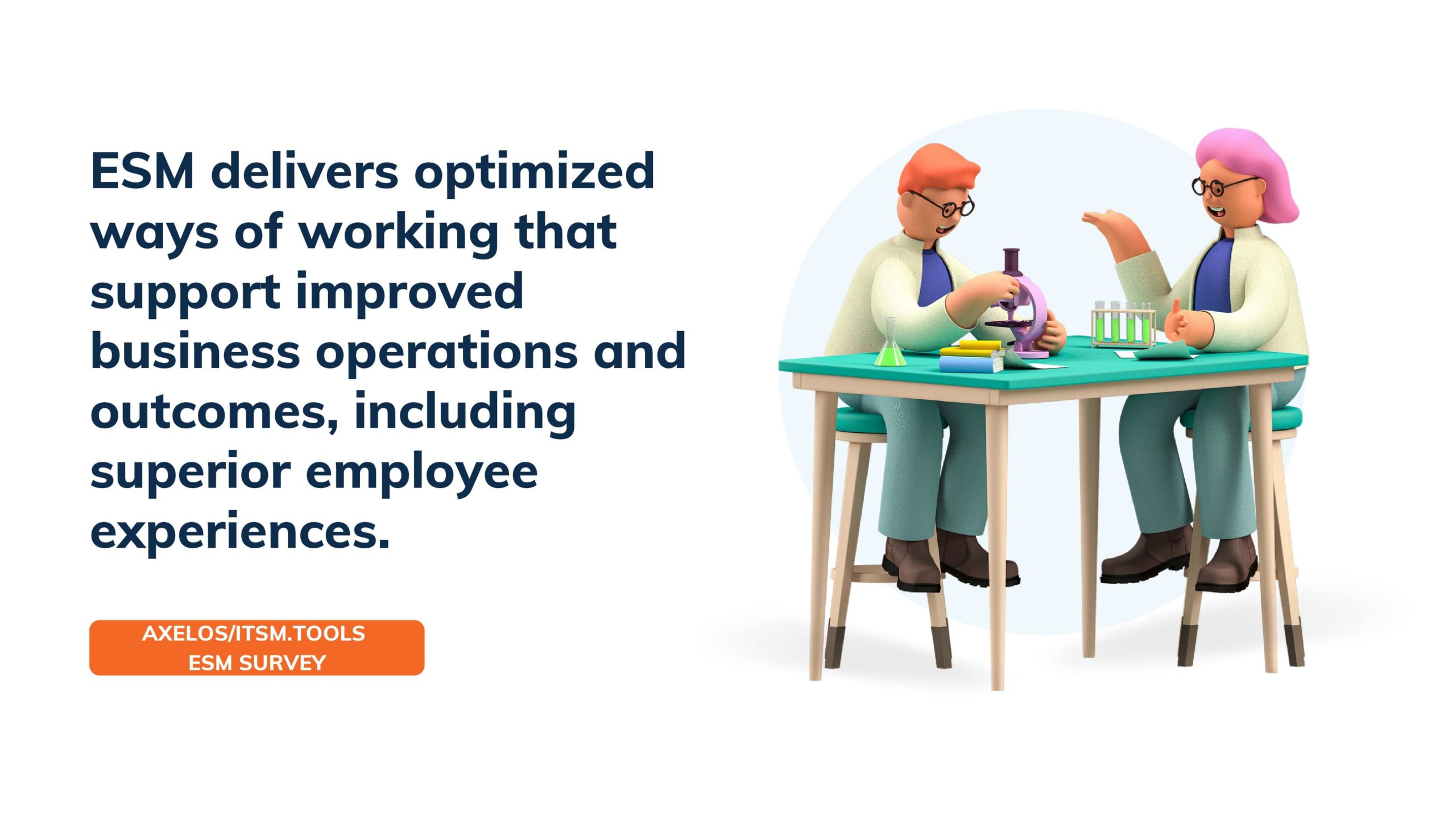
#3: The Three Key Drivers for Enterprise Service Management
Unlike in the early, tooling-focused days of enterprise service management, cost reduction is no longer seen as a top-three driver for enterprise service management adoption. Instead, enterprise service management strategies are most commonly being executed to meet the need for:
- Process standardization and optimization
- Digital transformation enablement
- Employee productivity improvement
Ultimately delivering optimized ways of working that support improved business operations and outcomes, including superior employee experiences.
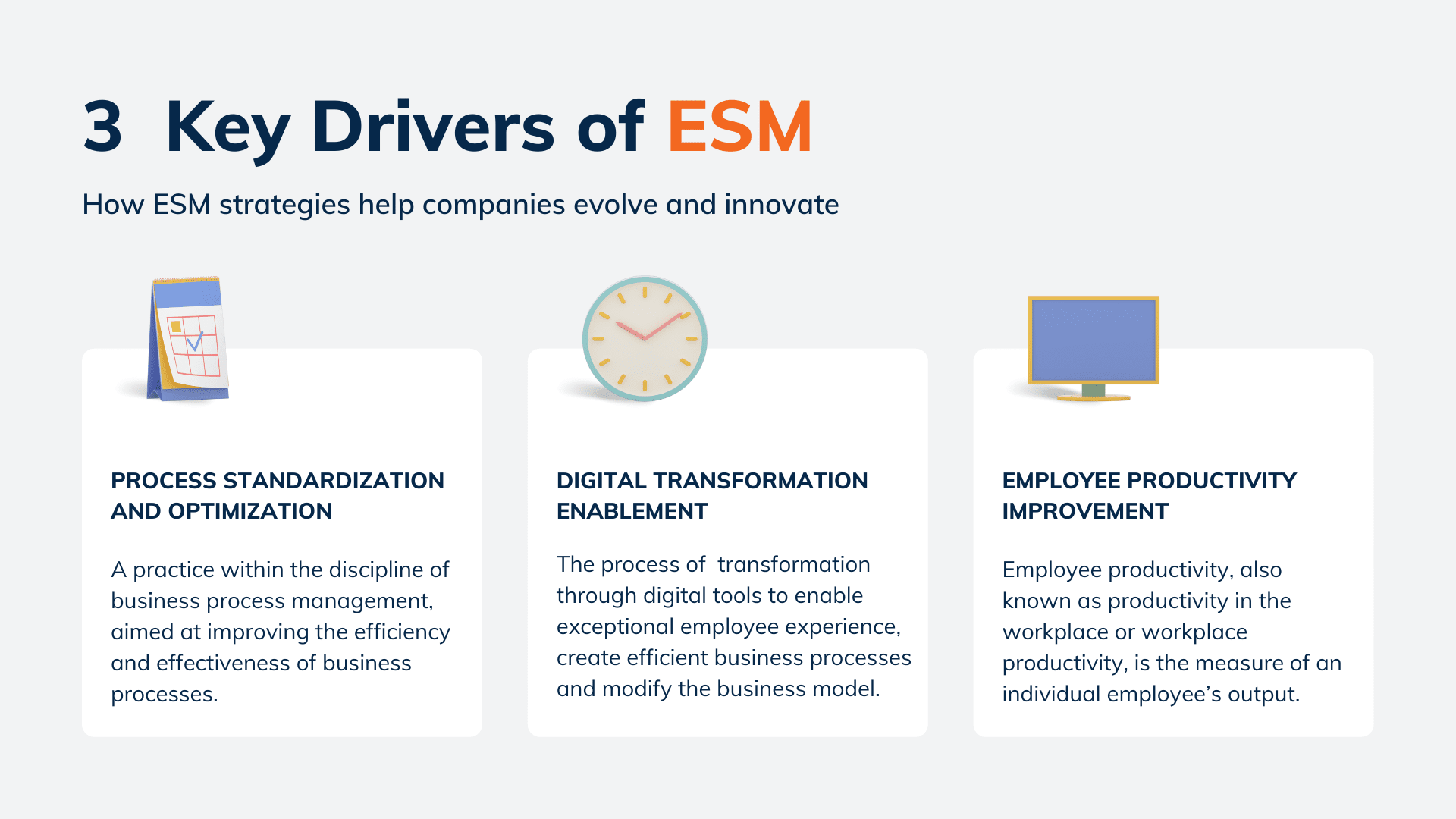
#4: CIOs Commonly Lead on Enterprise Service Management Strategies
A commonly asked question is “Who should be leading on our corporate enterprise service management strategy?” The short answer is that it differs by organization, but some roles are more commonly leading enterprise service management initiatives than others.
Whether it’s the fact that enterprise service management is reliant on an organization’s ITSM capabilities or because there’s a heavy technology element when delivering against the need for digital workflows, it’s not unsurprising that CIOs are most commonly at the helm with enterprise service management strategies. CEOs are the next most common role.
Interestingly, and somewhat understandably, CIOs are more likely to be in charge in larger organizations, with CEOs being so in smaller organizations.
#5: The Most Popular Enterprise Service Management Use Cases
The extension of ITSM capabilities can be to a variety of business functions/teams given that most parts of an organization need digitally-enabled workflows, often to enable where a service provider delivers against the needs of a service requester. Whether the request is for help, information, service, or change.
As of Q2 2021, the enterprise service management approach is being applied to a wide variety of business functions/teams, with the following functions/teams the key adopters:
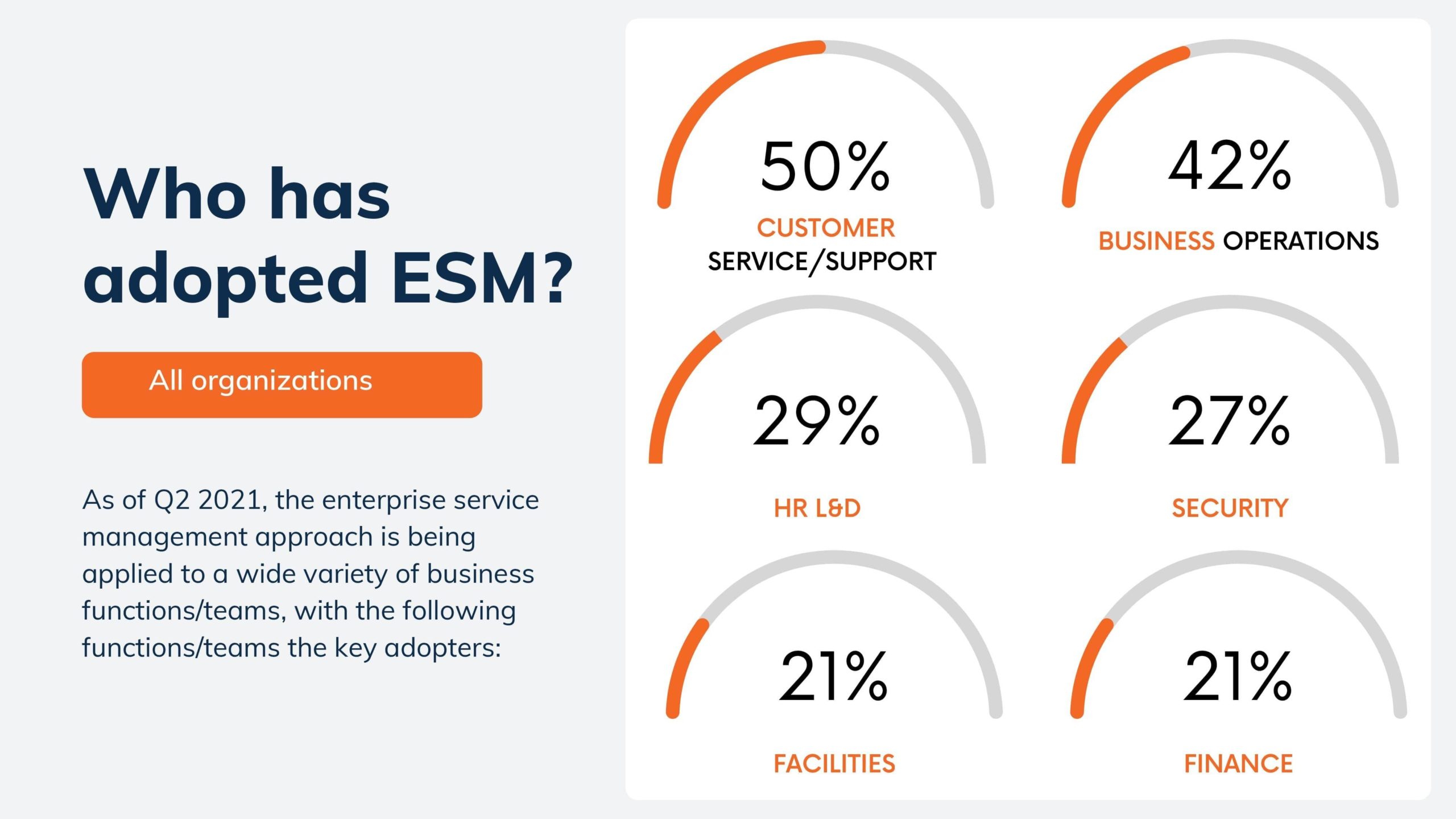
Please remember that the above is the percentage of all organizations, not those just those with enterprise service management strategies in-flight. When the above is adjusted to reflect the adoption by those organizations with active enterprise service management strategies, the percentages are:
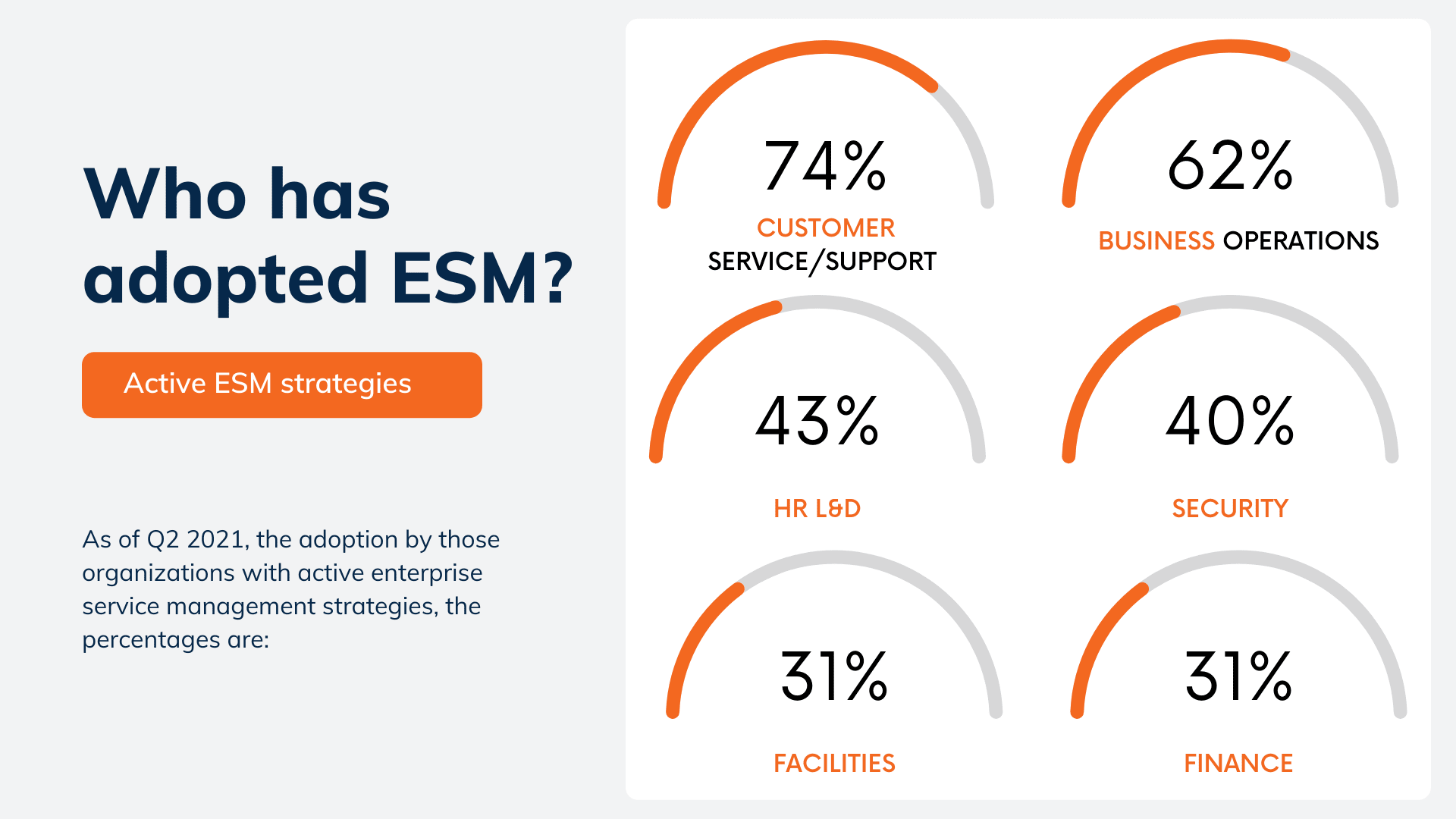
#6: The Most Shared ITSM Capabilities
When enterprise service management is described as the sharing of ITSM capabilities with other business functions, there’s often a similar perception to what can happen with ITSM or ITIL adoption – that everything is used. However, just because an organization says that it uses ITSM or has adopted ITIL best practices, it doesn’t mean that it’s applying all 26 of the processes in ITIL v3/2011 or all 34 of the practices in ITIL 4.
Given that ITIL is designed to be “adopted and adapted,” it’s unsurprising that the relative levels of enterprise service management capability adoption are so varied – because a capability needs to first be used within IT for it to then be extended to other business functions/teams.
For the organizations that already have an enterprise service management strategy in-flight, the main ITSM capabilities being shared across business functions/teams are:
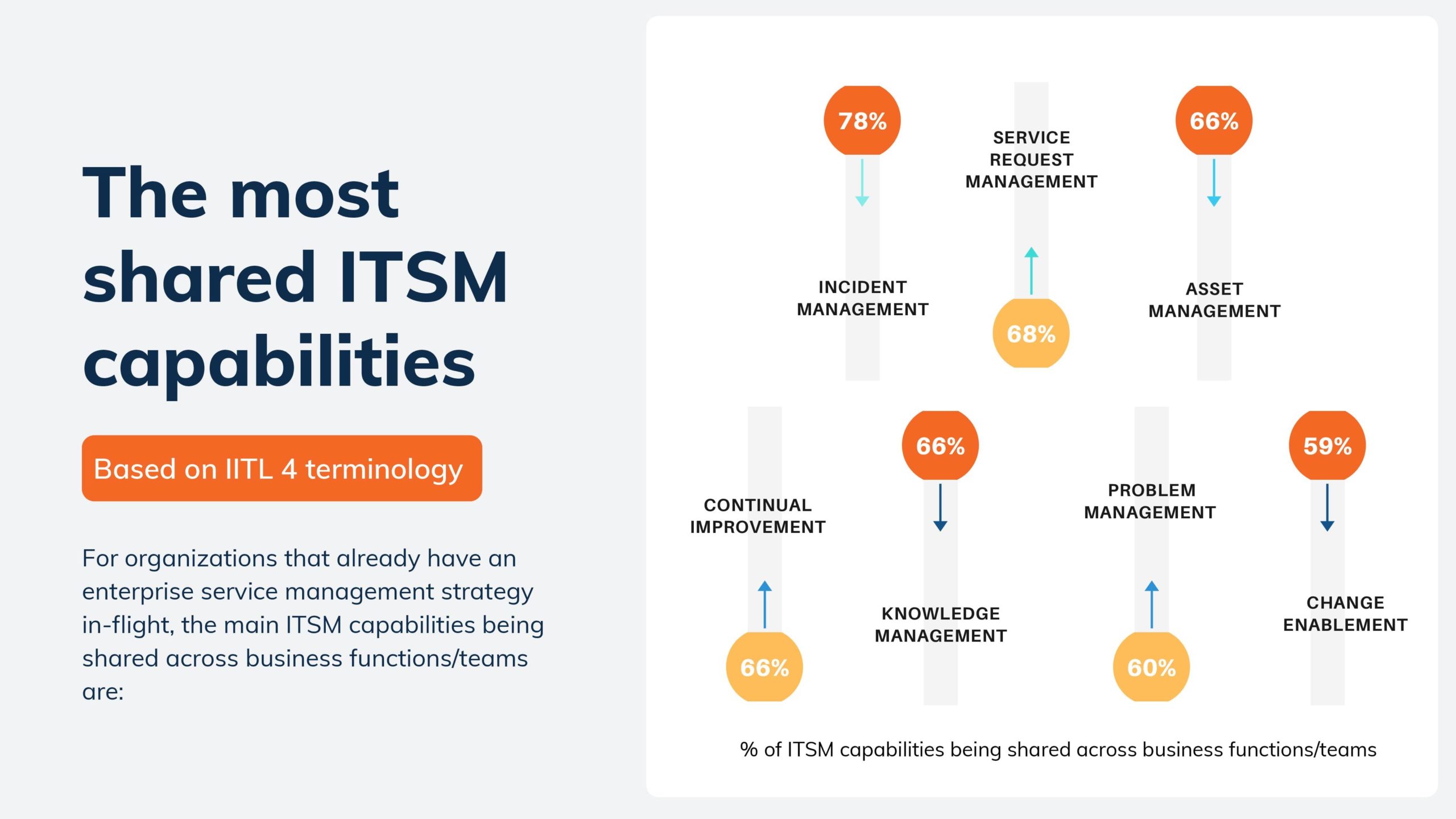
Please note that the above list is based on ITIL 4 terminology and, consequently, more organizations might be employing the more generic “ticketing,” say, but survey respondents didn’t recognize or align with the ITIL incident management and service request management terms.
Of particular note in the above list is the high positioning of asset management, with this practice seeing significant adoption growth since late-2018 – initially in IT and then shared with other business functions/teams.
#7: Enterprise Service Management Adoption Has Grown with Digital Transformation Acceleration
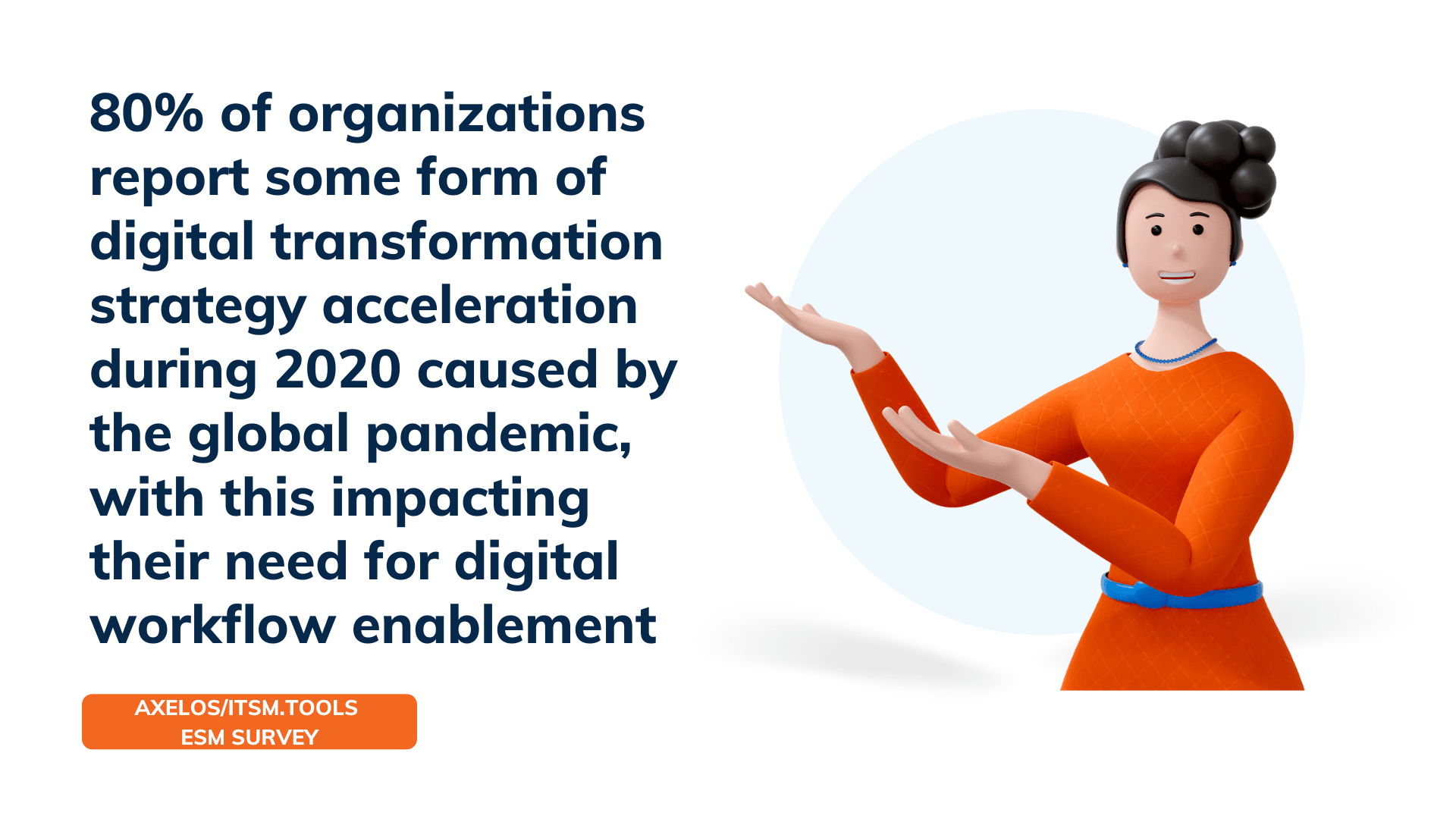
80% of organizations report some form of digital-transformation-strategy acceleration during 2020 caused the global pandemic, with this impacting their need for digital workflow enablement (which can be provided by ITSM tools). In understanding what has driven this acceleration of digital transformation strategies, distanced working was by far the most common factor – with this a top factor for 88% of the organizations that have seen digital transformation acceleration. This need for “back-office digital transformation” maps well to the shared capabilities of taking an enterprise service management approach.
#8: Enterprise-wide ITSM Technology Exploitation Has Increased Significantly
ITSM tools have long been used by other business functions/teams, in some organizations, to improve their operations and outcomes. However, when looking at enterprise service management through a technology-sharing lens it’s important to appreciate that:
The corporate ITSM tool can be used by another business function without there being an enterprise service management strategy.
An enterprise service management strategy might simply share service management best practices but not the corporate ITSM tool. For example, with customer service/support teams.
Hence, the level of ITSM tool sharing, shown below, needs to recognize the potential for misalignment between tool sharing and strategy adoption:
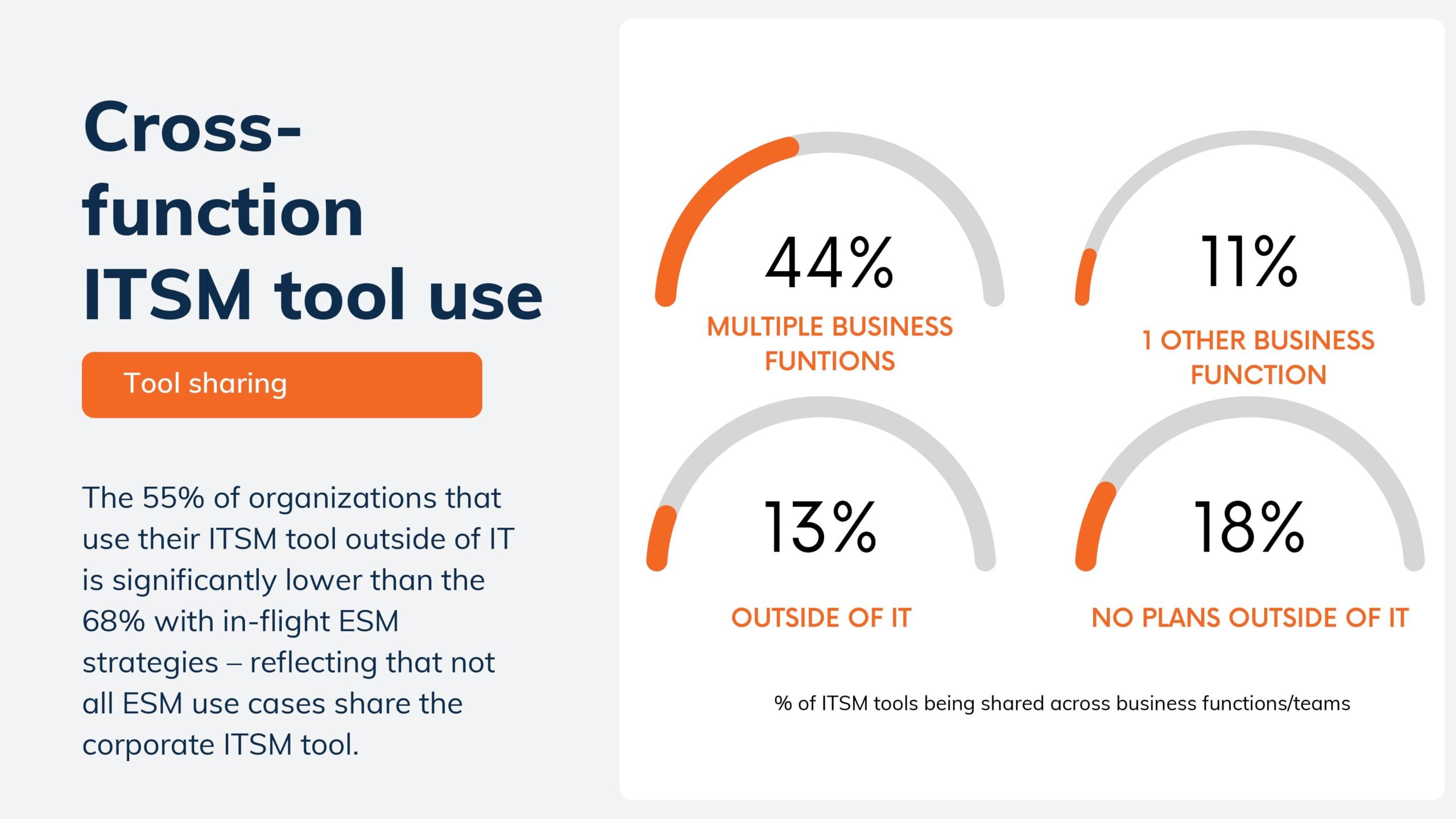
44% of organizations use their ITSM tool in multiple other business functions
11% use their ITSM tool in one other business functions
13% plan to use their ITSM tool outside of IT
18% have no plans to use their ITSM tool outside of IT
The 55% of organizations that use their ITSM tool outside of IT is significantly lower than the 68% with in-flight enterprise service management strategies – with this reflecting that not all enterprise service management use cases share the corporate ITSM tool. Plus, we need to bear in mind that not all organizations employ a fit-for-purpose ITSM tool, perhaps operating their service management practices via email and other personal productivity tools.
When the above percentages are compared to 2019 data, there are two key changes:
The percentage of organizations using their ITSM tool in multiple business functions has more than doubled
The percentage of organizations with no plans to extend the use of their ITSM tool outside of IT has more than halved.
#9: The Addition of Intelligent Automation to Enterprise Service Management
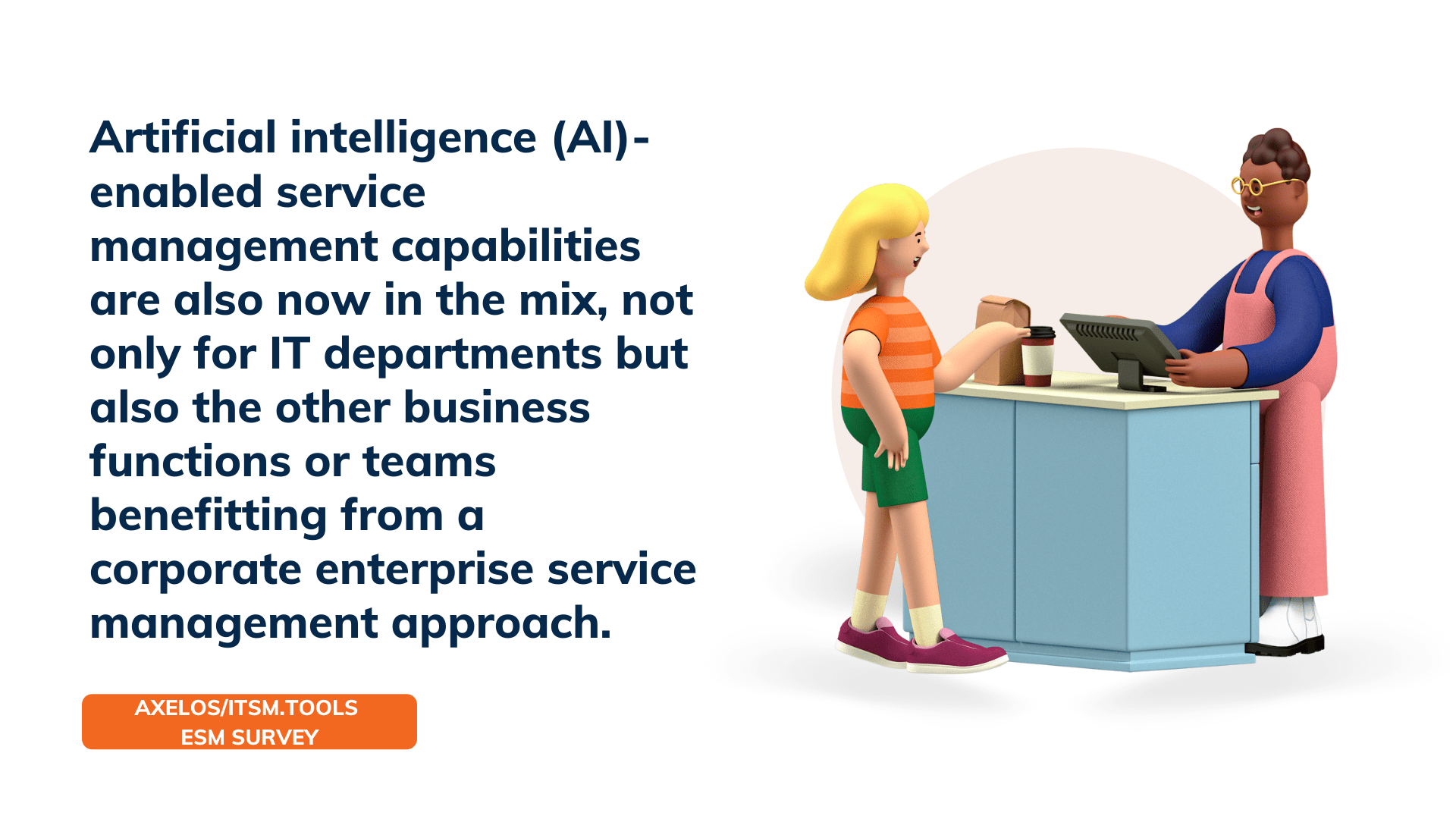
ITSM tools have long been seen as a proven platform for providing digital workflows and other digital-enabling capabilities, such as self-service and knowledge management, to other business functions/teams. Now artificial intelligence (AI)-enabled service management capabilities – “intelligent automation” – are also in the mix, not only for IT departments but also the other business functions/teams benefitting from a corporate enterprise service management approach.
As of Q2 2021, 24% of organizations still have no plans to use intelligent automation – although many of them will no doubt be using it by default, as their technology suppliers embed AI-enabled capabilities within their software, hardware, and services.
In terms of the current level of AI use, the total is pretty high at 40%. However, these capabilities are still only available within the IT department for half of these organizations (22%). Although, when it’s applied to other business functions this is nearly twice as likely to be as part of an enterprise service management approach than not.
Find Out More About How Enterprise Service Management Will Help Your Organization
The global adoption of enterprise service management strategies has grown significantly in the last two years. This in part reflects the greater availability of related best practices, the improved capabilities of service management tools, the increased sharing of customer success stories, and the acceleration of digital transformation strategies – with the associated need for digital workflows – caused by the global pandemic.
Adoption levels will continue to grow, across organizations of all sizes, with more organizations expected to move from planning for enterprise service management and early-stage adoption to well-advanced status as we move into 2022.
Download your e-book here>>
Download Enterprise Service Management Guide
If you would like to find out more about how enterprise service management will help your organization to improve its operations and outcomes, then please join us live at UNITY21 where we’ll be looking at enterprise service management from a number of angles to see how unifying service teams really can delivery brilliant digital employee experiences.
The statistics used above are taken from a joint AXELOS Global Best Practice and ITSM.tools survey that was run in Q1-Q2 2021 to gain important insights on where enterprise service management adoption currently stands and is heading.

























